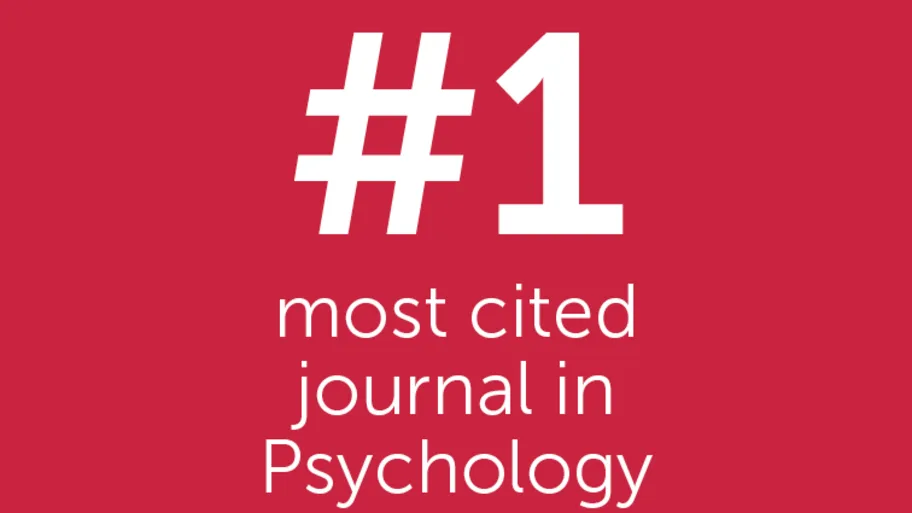
- Science news
- Impact analysis
- Quality and Impact Analysis: Frontiers in Neuroscience
Quality and Impact Analysis: Frontiers in Neuroscience
By Pascal Rocha da Silva, Frontiers analyst
The field of Frontiers in Neuroscience, established in 2008, has become the #1 most cited and #1 largest Open Access publisher of Neuroscience and the 3rd most cited and 4th largest Neuroscience publisher overall.
The impact factor (IF), defined as the total number of citations divided by the number of citable articles over a two-year period, is the gold standard of journal quality (not of an individual scientist). It was formally established by the Institute for Scientific Information (ISI) in 1975. As the IF can be heavily skewed by a few highly cited papers, total citations generated over the same two-year period provide a more accurate measure of the overall influence or impact of the articles published by a journal in a field.
Analysis within the JCR category of Neuroscience
There are 252 journals listed within the category of “Neurosciences” in the 2014 Journal Citation Reports (JCR), provided by Thomson Reuters in 2015. There are 36 Gold Open Access journals indexed in the 2014 JCR. Frontiers is structured by academic fields (e.g. Neuroscience, Psychology, Plant Science, etc.) with specialty sections (e.g. Developmental Psychology). In the case of the field of Frontiers in Neuroscience, 13 of its specialty sections have become journals and the journal Frontiers in Neuroscience hosts the remaining sections. The field of Frontiers in Neuroscience therefore publishes 14 neuroscience journals, of which 10 have already received impact factors:
Below are the results of our comparative analysis on the article volume published, impact factor (IF) and the total number of citations achieved in 2014 based on articles published over the two preceding years, 2012 and 2013. (Click here to see the volume and number of citations of other Frontiers journals).
Comparison of impact factors and volume among all Open Access journals (36) in the Neurosciences category

Figure 1. The 10 journals in the field of Frontiers in Neuroscience (red dots) compared to all other 26 Open Access journals (grey dots) listed in the Neurosciences JCR category. The journal analysis is based on the 2014 Journal Citation Reports published by Thomson Reuters, 2015.
Most cited Open Access journals in the Neurosciences category
_

_
Figure 2. Top 25 most cited open access journals in the Neuroscience JCR category. Citations in 2014 were counted for articles published in 2012 and 2013. In blue the entire field of Frontiers in Neuroscience, in red the individual Frontiers journals, in grey other Open Access journals. The journal analysis is based on the 2014 Journal Citations Reports published by Thomson Reuters, 2015.
Citations to the field of Frontiers in Neuroscience (10 journals) compared to all other Open Access journals combined (26 journals)

Figure 3. The 10 journals in the field of Frontiers in Neuroscience combined compared to the 26 other Open Access journals in the Neurosciences JCR category combined. Citations in 2014 were counted for articles published in 2012 and 2013. The journal analysis is based on the 2014 Journal Citation Reports published by Thomson Reuters, 2015.
Comparison of impact factors and volume among all journals (252) in the Neurosciences category

Figure 4. The 10 journals in the field of Frontiers in Neuroscience compared to the other 242 journals (subscription and Open Access) listed in the Neuroscience JCR category. The journal analysis is based on the 2014 Journal Citation Reports published by Thomson Reuters, 2015.
Most cited journals in the Neurosciences category

Figure 5. Total number of citations generated by the field of Frontiers in Neuroscience compared to top journals in the 2014 Neurosciences JCR category (open access and subscription). Citations in 2014 were counted for articles published in 2012 and 2013. In blue the entire field of Frontiers in Neuroscience, in red the individual Frontiers journals, in grey other journals. The journal analysis is based on the 2014 Journal Citation Reports published by Thomson Reuters, 2015.
Top 15 largest publishers in the Neurosciences category

Figure 6. Top 15 largest publishers in the Neurosciences category based on the 2014 Journal Citation Reports published by Thomson Reuters, 2015.
Summary
Amongst the 36 Gold Open Access journals listed in the JCR category of Neuroscience, the field of Frontiers in Neuroscience:
Publishes 58% of all Open Access articles.
Has an average impact factor that is 22% higher than the average.
Generated 52% of the total citations received by Open Access neuroscience journals.
Amongst all of the 252 journals listed in the JCR category of Neurosciences, the field of Frontiers in Neuroscience:
Generated the 3rd highest number of citations when compared to all journals in the JCR category of Neurosciences.
Is the 4th largest publisher of neuroscience articles overall (after Elsevier, Wiley and Springer).
In summary, the field of Frontiers in Neuroscience, launched in 2008, has become the #1 most cited and #1 largest Open Access publisher in the JCR category of Neurosciences and the 3rd most cited and 4th largest Neuroscience publisher overall.
The specialty journal, Frontiers in Human Neuroscience, listed in the 2014 JCR categories of Neurosciences and Psychology, has become the #****1 most cited journal in psychology, the #1 most cited Open Access journal dedicated to neuroscience and the 10th most cited journal in all of neuroscience. It is also the 2nd and 3rd largest journal in all of psychology and neuroscience, respectively.
Other Frontiers journals listed in the 2014 Journal Citation Reports follow a similar pattern – view the analysis here.
Key to success
At Frontiers, we publish all articles that are scientifically correct. We engineered the Collaborative Peer Review with a review mandate focused on enhancing article quality by means of rigorous and constructive feedback from expert reviewers, quick and direct interactions between authors, reviewers and the editor enabled by our review forum platform, and we enhance transparency by acknowledging reviewers and editors on the published articles. This performance analysis indicates that the impact neutral Collaborative Peer Review conducted in Frontiers together with an outstanding editorial board has become a powerful model for publishing academic papers.
All of this is only possible with a stellar editorial board of researchers (see infographic). Frontiers congratulates Field Chief Editor Idan Segev, and Assistant Field Chief Editors Larry Abbott, and Jon H Kaas for leading this field so successfully, the stellar board of Specialty Chief Editors (see below) for their work in building the community, the Associate Editors for safeguarding the integrity of the Frontiers peer-review and the outstanding Review Editors for their dedication and diligence in the peer-review process as well as the Frontiers Journal Management team for their support to the editors.
The field of Frontiers in Neuroscience fact sheet (as of December 2015):
Website: | |
Launched: | 2008 |
Number of journals (with vs. without IF): | 10 vs. 4 |
Number of Research Topics: | 577 |
Number of editors: | 5,860 |
Number of articles published: | 11,390 |
Number of article views: | 960,877 / month |
Number of article downloads: | 306,535 /month |
Chief Editors:
Idan Segev, The Hebrew University of Jerusalem
Field Chief Editor, Frontiers in Neuroscience
Larry Abbott, Columbia University New York
Assistant Field Chief Editor, Frontiers in Neuroscience
Jon H Kaas, Vanderbilt University Nashville
Assistant Field Chief Editor, Frontiers in Neuroscience
Isabelle Peretz, Université de Montréal
Specialty Chief Editor, Auditory Cognitive Neuroscience
Robert J Zatorre, McGill University Montreal
Specialty Chief Editor, Auditory Cognitive Neuroscience
Joel C Bornstein, The University of Melbourne
Specialty Chief Editor, Autonomic Neuroscience
Vaughan G Macefield, Western Sydney University
Specialty Chief Editor, Autonomic Neuroscience
Vaughan G Macefield, Western Sydney University
Specialty Chief Editor, Autonomic Neuroscience
Russell A Poldrack, Stanford University San Francisco
Specialty Chief Editor, Brain Imaging Methods
Jean-Baptiste Poline, University of California Berkeley
Specialty Chief Editor, Brain Imaging Methods
Vishal Madaan, University of Virginia Health System Charlottesville
Specialty Chief Editor, Child and Neurodevelopmental Psychiatry
Hauke R Heekeren, Freie Universität Berlin
Specialty Chief Editor, Decision Neuroscience
Paul E. M. Phillips, University of Washington Seattle
Specialty Chief Editor, Decision Neuroscience
Aaron Vinik, Eastern Virginia Medical School Norfolk
Specialty Chief Editor, Diabetes
Karol Osipowicz, Jefferson Neuroscience Hospital Philadelphia
Specialty Chief Editor, Evolutionary Psychology and Neuroscience
Laura Ballerini, SISSA-ISAS International School for Advanced Studies, Trieste and University of Trieste
Specialty Chief Editor, Neural Technology
Ioan Opris, Wake Forest University School of Medicine Winston Salem
Specialty Chief Editor, Neural Technology
Mark P Burns, Georgetown University Medical Center, Washington
Specialty Chief Editor, Neurodegeneration
Wendy Noble, King’s College London
Specialty Chief Editor, Neurodegeneration
Einar M Sigurdsson, NYU School of Medicine
Specialty Chief Editor, Neurodegeneration
Hubert Vaudry, University of Rouen Mont-Saint-Aignan
Specialty Chief Editor, Neuroendocrine Science
Suzanne L. Dickson, The Sahlgrenska Academy at the University of Gothenburg
Specialty Chief Editor, Neuroenergetics, Nutrition and Brain Health
Walter H Kaye, UCSD
Specialty Chief Editor, Neuroenergetics, Nutrition and Brain Health
Pierre J Magistretti, Ecole Polytechnique Federale De Lausanne
Specialty Chief Editor, Neuroenergetics, Nutrition and Brain Health
A special thanks goes to: Angelique Bordey, Yale University School of Medicine New Haven
Former Specialty Chief Editor, Neurogenesis
A special thanks goes to: Maria J Donoghue, Georgetown University Washington
Former Specialty Chief Editor, Neurogenesis
Robert W Williams, University of Tennessee Health Science Center Memphis
Specialty Chief Editor, Neurogenomics
Timothy K Horiuchi, The University of Maryland
Specialty Chief Editor, Neuromorphic Engineering
Giacomo Indiveri, University of Zurich and ETH Zurich
Specialty Chief Editor, Neuromorphic Engineering
Nicholas M Barnes, University of Birmingham
Specialty Chief Editor, Neuropharmacology
A special thanks goes to: Niels Birbaumer, University of Tuebingen
Former Specialty Chief Editor, Neuroprosthetics
A special thanks goes to: Eilon Vaadia, The Hebrew University Jerusalem
Former Specialty Chief Editor, Neuroprosthetics
Hiroaki Kitano, The Systems Biology Institute Tokyo
Specialty Chief Editor, Systems Biology
Aldana Maximino, Universidad Nacional Autónoma de México Cuernavaca
Specialty Chief Editor, Systems Biology
Raina Robeva, Randolph-Macon College and Sweet Briar College
Specialty Chief Editor, Systems Biology
Gemma Casadesus, Kent State University, USA
Specialty Chief Editor, Frontiers in Aging Neuroscience
Rodrigo Orlando Kuljiš, University of Miami School of Medicine, USA
Specialty Chief Editor, Frontiers in Aging Neuroscience
Nuno Sousa, ICVS, University of Minho Braga, Portugal
Specialty Chief Editor, Frontiers in Behavioral Neuroscience
A special thanks goes to: Carmen Sandi, Ecole Polytechnique Fédérale de Lausanne (EPFL), Switzerland
Former Specialty Chief Editor, Frontiers in Behavioral Neuroscience
Egidio D‘Angelo University of Pavia, Italy
Specialty Chief Editor Frontiers in Cellular Neuroscience
Christian Hansel, University of Chicago, United States of America
Specialty Chief Editor Frontiers in Cellular Neuroscience
Misha Tsodyks Weizmann Institute of Science, Rehovot, Israel
Specialty Chief Editor Frontiers in Computational Neuroscience
Si Wu, Beijing Normal University, China
Specialty Chief Editor Frontiers in Computational Neuroscience
Hauke R Heekeren, Freie Universität Berlin, Germany
Specialty Chief Editor, Frontiers in Human Neuroscience
Srikantan S Nagarajan, University of California, UC Berkeley, San Francisco, USA
Specialty Chief Editor, Frontiers in Human Neuroscience
A special thanks goes to: John J Foxe, University of Rochester School of Medicine and Dentistry, New York, USA
Former Specialty Chief Editor, Frontiers in Human Neuroscience
Sidney A Simon, Duke University, Durham, NC, USA
Specialty Chief Editor, Frontiers in Integrative Neuroscience
Elizabeth B Torres, Rutgers University, New Brunswick, NJ, USA
Assistant Specialty Chief Editor, Frontiers in Integrative Neuroscience
Robert J Harvey, UCL School of Pharmacy, London, United Kingdom
Specialty Chief Editor, Frontiers in Molecular Neuroscience
Jochen C Meier, Technical University Braunschweig, Germany
Specialty Chief Editor, Frontiers in Molecular Neuroscience
Peter H Seeburg, Max Planck Institute for Medical Research, Heidelberg, Germany
Specialty Chief Editor, Frontiers in Molecular Neuroscience
Takao K. Hensch, Harvard University, Cambridge, MA, USA
Specialty Chief Editor, Frontiers in Neural Circuits
Javier DeFelipe, Cajal Institute, Madrid, Spain
Specialty Chief Editor, Frontiers in Neuroanatomy
Jan G Bjaalie, University of Oslo, Norway
Specialty Chief Editor, Frontiers in Neuroinformatics
Sean L Hill, Ecole Polytechnique Federale de Lausanne and International Neuroinformatics Coordinating Facility (INCF), Stockholm, Sweden
Specialty Chief Editor, Frontiers in Neuroinformatics
Alois C Knoll, Technische Universität München, Garching, Germany
Specialty Chief Editor, Frontiers in Neurorobotics
Florian Röhrbein, Technische Universität München, Garching, Germany
Assistant Specialty Chief Editor, Frontiers in Neurorobotics
Mary B Kennedy, Caltech, Pasadena, USA
Specialty Chief Editor, Frontiers in Synaptic Neuroscience
Per Jesper Sjöström, The Research Institute of the McGill University Health Centre, Montreal, Canada
Specialty Chief Editor, Frontiers in Synaptic Neuroscience
Ranulfo Romo, Universidad Nacional Autónoma de México, Mexico City, Mexico
Specialty Chief Editor, Frontiers in Systems Neuroscience
Maria V Sanchez-Vives, ICREA-IDIBAPS, Barcelona, Spain
Specialty Chief Editor, Frontiers in Systems Neuroscience






